
|
Champagne Tourney
|
|
Theme Definition and background Prizes in bottles of champagne. You can participate with either of the two following ways:
|
| Éric Pichouron Michel Caillaud Problemesis 2004 |
Gligor Denkovski Orbit 2004 |
||||||
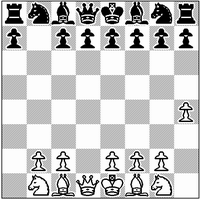 |
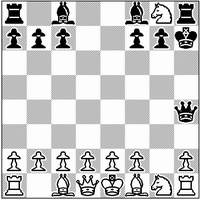 |
||||||
| PG in 7.5 | (12+15) | PG in 9.0 | (15+11) | ||||
Éric Pichouron & Michel Caillaud Gligor Denkovski |
| Joachim Iglesias Problemesis 2004 |
Joachim Iglesias Problemesis 2004 |
||||||
 |
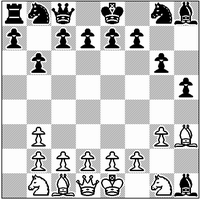 |
||||||
| PG in 11.5 | (14+14) | PG in 12.0 | (13+15) | ||||
Joachim Iglesias Joachim Iglesias |
This tourney attracted 47 entries by 27 composers. 18 were submitted by e-mail and the remaining 29 at the Congress. Unfortunately, an important part of the judging time was devoted to prove unsoundness of problems "obviously cooked", but not obvious to cook. To avoid this in the future, the participation will be limited to only one non computer-tested (testable) problem per composer... 11 problems were cooked and the level of the remaining 36 is very high: no less than 13 of them showed the theme more than once! Unfortunately no fairy game stays in the award, as 5 of them were cooked and in the last one, the condition was used to avoid cooks in an orthodox game. As was the case also in Messigny, delivering an award for such a large amount of entries in a short time was quite a challenge and the result may well be imperfect. I had to make some short-cuts:
Great thanks are due to Kostas Prentos, in particular for allowing me to include so many problems in the award, even if this meant additional work in the production of the Congress bulletin! [Judge's note] Some comments have been changed compared to the initial award published in the bulletin, for more completion and clarity, I hope! Some amendments have also been done, due to cooks found later: the 4th Prize was cooked; the initial 5th, 6th Prize and 1st HM become 4th, 5th, 6th Prize and the initial 4th Prize, with half a move less, becomes 1st HM. The 3rd HM was cooked; the initial 4th, 5th, 6th HM become 3rd, 4th, 5th HM. One of the three 5-7 Commendations was cooked, which leaves only two 5-6 Comm. Now, there are left only two not computer-tested problems (the 3rd and 4th Hon. Mentions by the same composer!) |
|
Rustam Ubaidullaev Sp Pr Champagne Ty Halkidiki 2004 |
Reto Aschwanden 1 Pr Champagne Ty Halkidiki 2004 |
Noam Elkies 2 Pr Champagne Ty Halkidiki 2004 |
|||
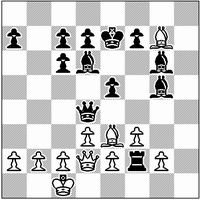 |
 |
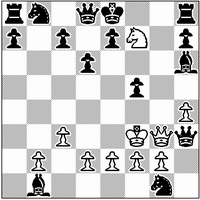 |
|||
PG in 21.5 |
(11+12) |
PG in 23.0 |
(12+15)
|
PG in 19.0 |
(10+15)
|
|
Special Prize: Rustam Ubaidullaev (Russia) First series: the three first Prizes go to the most ambitious idea displayed in doubling the theme: "reciprocal sibling" (or exchange of place of the thematic units). Each of them uses an extra promoted man in the diagram (this is acceptable as long as there is no demonstration that the same can be done without using it...), and as each has its own distinctive strong points, it was difficult to establish an order. 1st Prize: Reto Aschwanden (Switzerland) 2nd Prize: Noam Elkies (Israel) |
|
Göran Wicklund 3 Pr Champagne Ty Halkidiki 2004 |
Andrey Frolkin Kostas Prentos 4 Pr Champagne Ty Halkidiki 2004 |
Unto Heinonen 5 Pr Champagne Ty Halkidiki 2004 |
|||
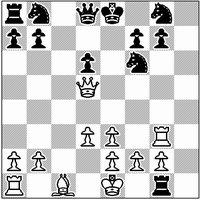 |
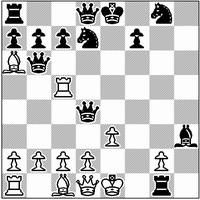 |
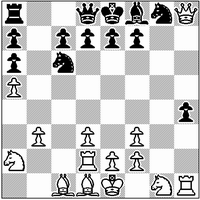 |
|||
PG in 17.0 |
(12+12) |
PG in 16.0 |
(12+13)
|
PG in 20.0 |
(14+13)
|
|
3rd Prize: Göran Wicklund (Sweden) Second series: "Only" once the theme, but with strong additional interest connected to the theme that is better than twice the theme in a (after this tourney) standard way. 4th Prize: Andrey Frolkin (Ukraine) & Kostas Prentos (Greece) 5th Prize: Unto Heinonen (Finland) |
|
Göran Wicklund 6 Pr Champagne Ty Halkidiki 2004 |
Göran Wicklund 1 HM Champagne Ty Halkidiki 2004 |
Gianni Donati 2 HM Champagne Ty Halkidiki 2004 |
|||
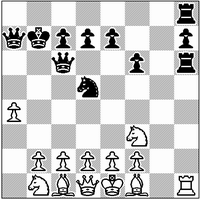 |
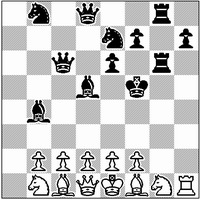 |
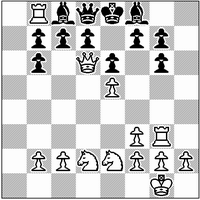 |
|||
PG in 16.5 |
(13+11) |
PG in 17.5 |
(12+12)
|
PG in 15.5 |
(13+12)
|
|
6th Prize: Göran Wicklund (Sweden) 1st Honourable Mention: Göran Wicklund (Sweden) Third series: in the following examples of doubling the theme without promoted man on the board (series 3 and 5), advantage was given to the thematic quality rather than to other additional features that could have caused a different order in a non-thematic tourney. Generally, non-capture of the original piece and last capture with check were considered as drawbacks. 2nd Honourable Mention: Gianni Donati (USA) |
|
Éric Pichouron 3 HM Champagne Ty Halkidiki 2004 |
Éric Pichouron 4 HM Champagne Ty Halkidiki 2004 |
Gligor Denkovski 5 HM Champagne Ty Halkidiki 2004 |
|||
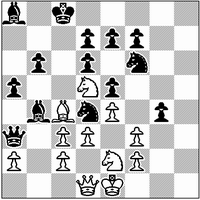 |
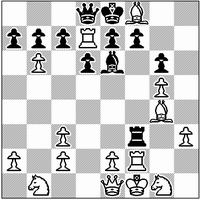 |
 |
|||
PG in 24.5 |
(12+14) |
PG in 23.5 |
(15+11)
|
PG in 10.0 |
(15+9)
|
|
3rd Honourable Mention: Éric Pichouron (France) 4th Honourable Mention: Éric Pichouron (France) Fourth series: again once the theme with additional interest connected to it. 5th Honourable Mention: Gligor Denkovski (Macedonia) |
|
Hitoshi Yanami 1 Comm Champagne Ty Halkidiki 2004 |
Ivan Denkovski 2 Comm Champagne Ty Halkidiki 2004 |
A. & V. Semenenko 3 Comm Champagne Ty Halkidiki 2004 |
|||
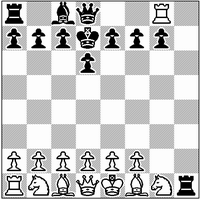 |
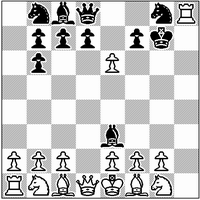 |
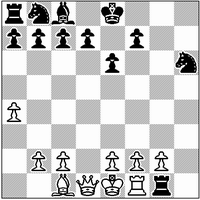 |
|||
PG in 7.0 |
(14+12) |
PG in 10.5 |
(15+11)
|
PG in 10.0 |
(10+12)
|
|
1st Commendation: Hitoshi Yanami (Japan) 2nd Commendation: Ivan Denkovski (Macedonia) Fifth (and last!) series: other examples of doubling the theme without apparent promotee that were considered less successful than those of the series 3 by the subjective eye of the judge. 3rd Commendation: Aleksandr & Valery Semenenko (Ukraine) |
|
Kostas Prentos Andrey Frolkin 4 Comm Champagne Ty Halkidiki 2004 |
Andrey Frolkin Kostas Prentos 5-6 Comm Champagne Ty Halkidiki 2004 |
Mario Parrinello 5-6 Comm Champagne Ty Halkidiki 2004 |
|||
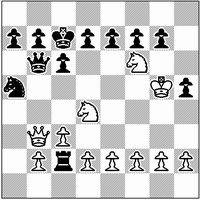 |
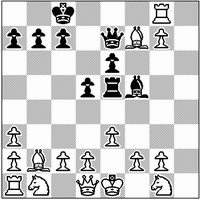 |
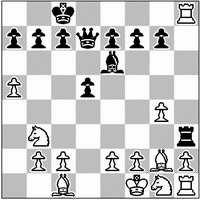 |
|||
PG in 19.5 |
(11+12) |
PG in 12.5 |
(16+9)
|
PG in 13.5 |
(14+11)
|
|
4th Commendation: Kostas Prentos (Greece) & Andrey Frolkin (Ukraine) 5th-6th Commendation ex aequo: Andrey Frolkin (Ukraine) & Kostas Prentos (Greece) 5th-6th Commendation ex aequo: Mario Parrinello (Italy) |